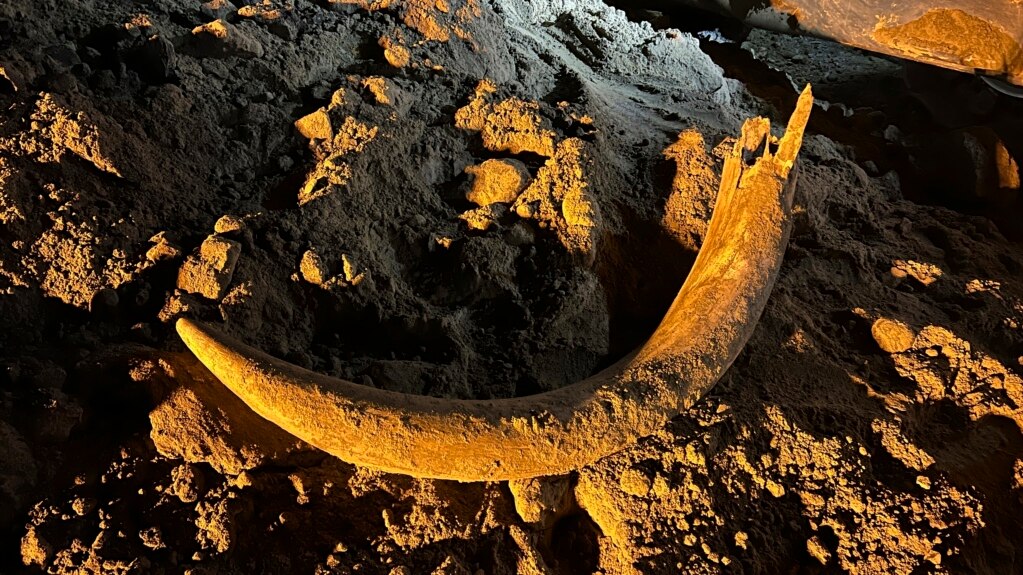The first person who saw it was working overnight. The worker, a shovel operator, saw something white as he placed a large amount of dirt into the back of a truck.
The driver of the truck put the dirt in the road. Another worker operating a bulldozer was ready to flatten it. But the worker stopped for a closer look when he, too, saw a piece of white.
Only then did the mining workers realize they had found something special: a 2-meter-long mammoth tusk that had been buried for thousands of years.
A mammoth is a kind of animal that lived in ancient times and had very long tusks. The animal went extinct, or disappeared, about 10,000 years ago in what is now the American state of North Dakota.
The miners unearthed the tusk at the Freedom Mine near Beulah, North Dakota. The mine produces up to 14.5 metric tons of coal each year.
“We were very fortunate, lucky to find what we found,” said David Straley. He is an executive of North American Coal, which owns the mine.
After finding the tusk, the workers stopped digging in the area and called in experts. The experts estimated the tusk to be anywhere from 10,000 to 100,000 years old.
Jeff Person is a paleontologist with the North Dakota Geologic Survey. A paleontologist is an expert on ancient remains. Person was one of the experts that examined the tusk. He said it was “miraculous” that the tusk had not been more damaged, considering the large equipment that miners use at the site.
Another dig at the discovery site found more bones. Experts found more than 20 bones. It is likely the most complete mammoth found in North Dakota, where it is more common to find one mammoth bone, tooth or piece of a tusk.
Person said it is not a lot of bones compared to how many make up the animal’s skeleton. But he said, “…it’s a lot more than we’ve ever found of one animal together.”
Mammoths once were found across parts of Africa, Asia, Europe, and North America. Paul Ullmann, a University of North Dakota paleontologist, said mammoth remains have been found throughout the United States and Canada.
The discovery at the mine is somewhat rare in North Dakota and in the area. Many remains of the animals alive during the last Ice Age were destroyed by movements of ice sheets, Ullmann said.
Other areas have produced more mammoth remains, such as in Texas and South Dakota. People have even found frozen mammoth bodies in Canada and Russia, Ullmann added.
The tusk weighs more than 22.6 kilograms and can break easily. Experts covered the tusk in plastic in order to control how fast the tusk loses water. If it loses water too quickly, the bone could break apart, Person said.
The experts covered the other bones in plastic and stored them. The bones will remain in plastic for at least several months until the scientists can get the water out safely. The paleontologists will identify what kind of mammoth the tusk came from later, Person said.
The mining company plans to donate the bones to the state for educational purposes.
“Our goal is to give it to the kids,” Straley said.
I’m Gregory Stachel.

